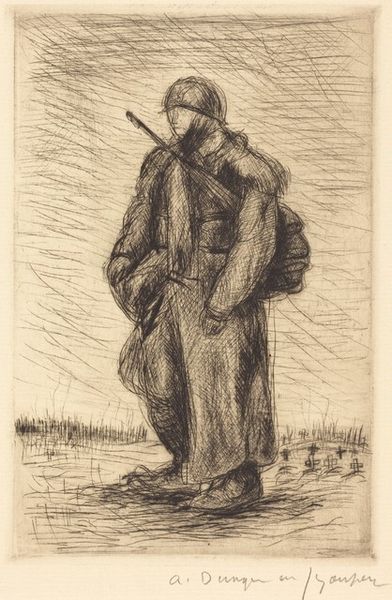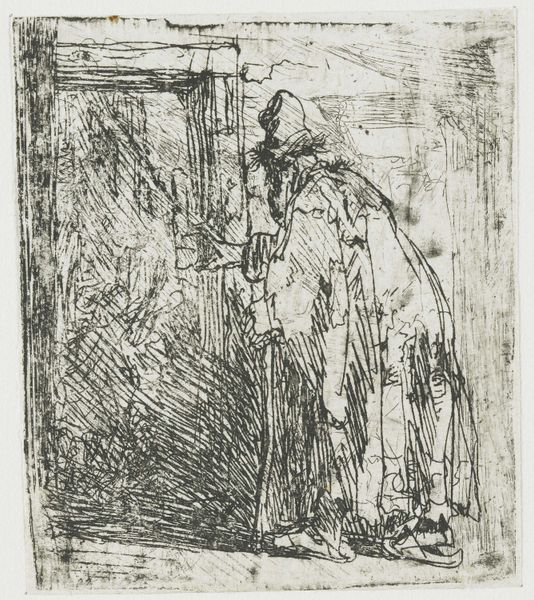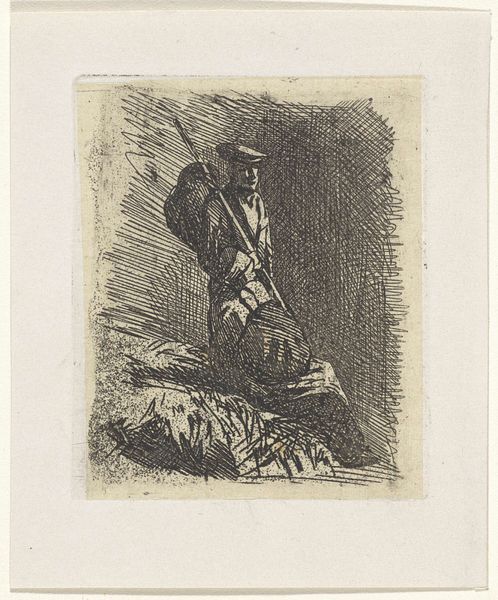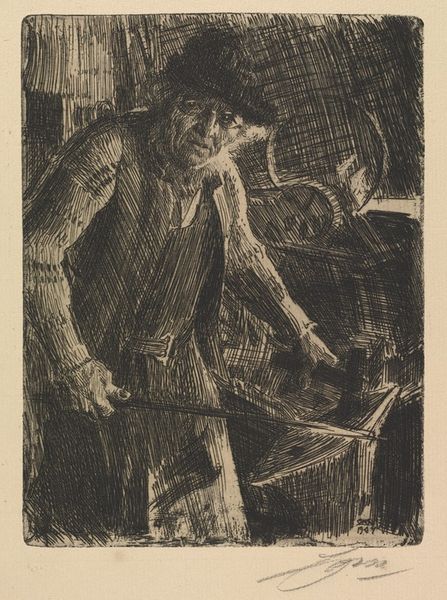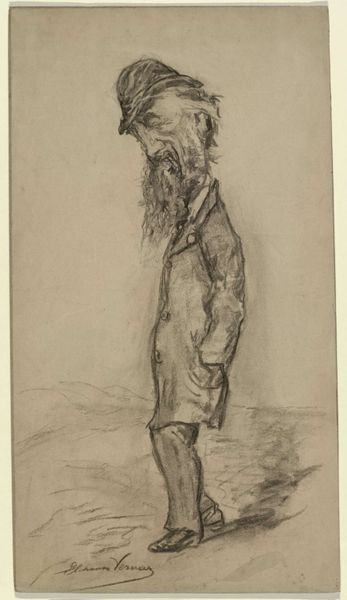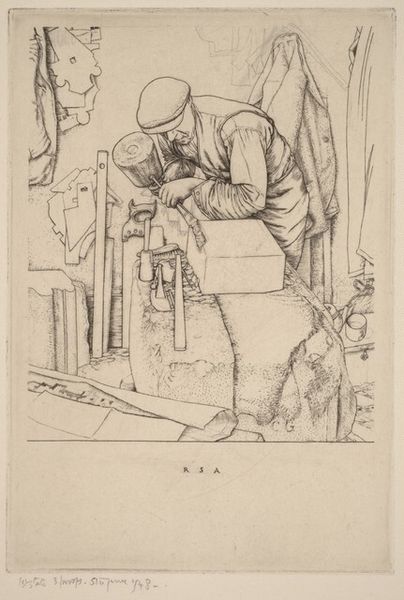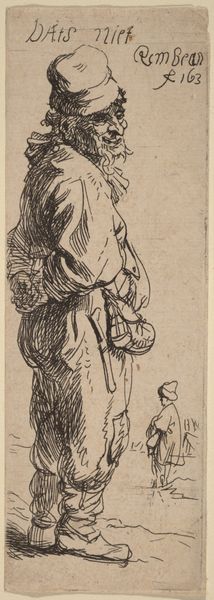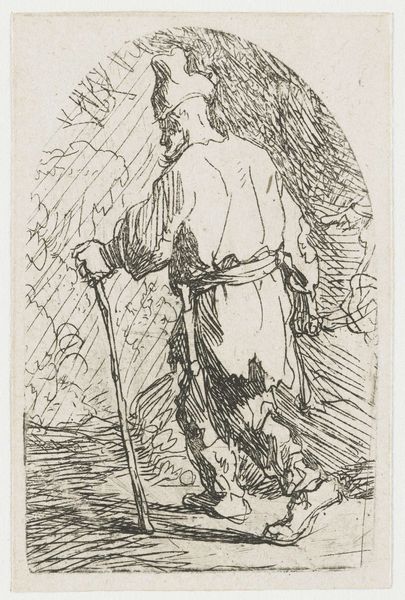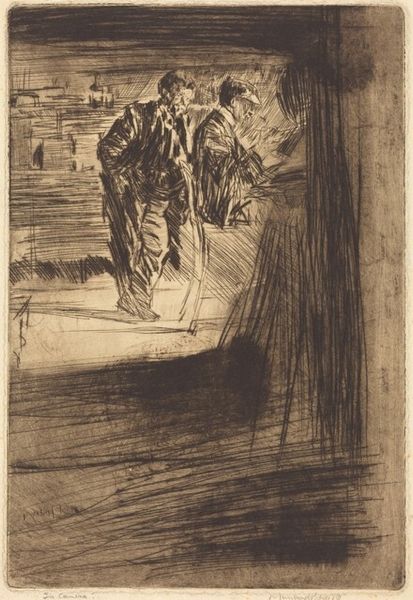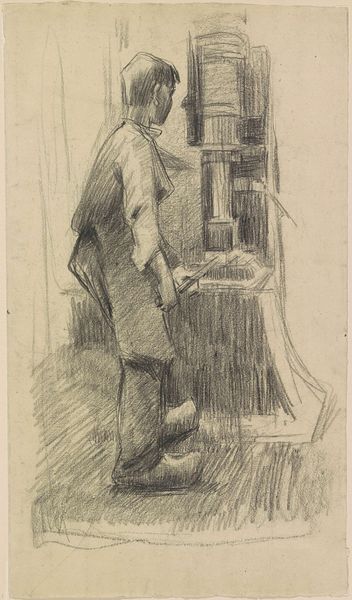
drawing, print, etching, intaglio
#
drawing
#
dutch-golden-age
# print
#
etching
#
intaglio
#
landscape
#
personal sketchbook
#
ink drawing experimentation
#
genre-painting
#
realism
Dimensions: height 96 mm, width 58 mm
Copyright: Rijks Museum: Open Domain
Editor: We're looking at "Man bindt bonenstaken in groententuin," or "Man Binding Bean Poles in a Vegetable Garden," an etching by Bernardus Johannes Blommers, created sometime between 1855 and 1892. It’s a small, intimate scene, rendered in delicate lines, with a sense of quiet labor. What do you see in this piece, and how might we interpret it beyond its literal depiction? Curator: I see a poignant commentary on labor and the connection to the land. Blommers, working within a tradition of Realism, isn't simply depicting a man working in a garden. Consider the socio-political context: The late 19th century saw increasing industrialization and urbanization, pulling people away from rural life. Doesn't this image, then, become a subtle statement about the value of agrarian work, and perhaps even a lament for a disappearing way of life? Look at the hunched posture of the figure. What does that evoke for you? Editor: It suggests hardship, definitely. And perhaps also a deep connection to the earth, almost like a bowing in reverence. The repetitive, almost meditative act of binding also suggests resilience and care. Curator: Precisely. And consider gender within this landscape. While we see a male figure, agricultural labor was – and still is in many parts of the world – heavily reliant on female contributions. Where are the women in this picture? Are they rendered invisible through this artistic choice, or is the artist trying to capture something more pointed about the changes in labor at that time? This opens the work to interpretations surrounding the shifting roles in society and the artistic representation of those changes. Editor: That's a perspective I hadn't considered. It’s almost a protest by omission. Seeing the artwork in the context of the bigger socio-economic picture really opens it up. Curator: Exactly! And it urges us to think critically about the narratives presented, and perhaps more importantly, the narratives left out. Editor: I am walking away thinking about it in a completely new way. Thank you! Curator: And thank you. It is always rewarding to uncover how history whispers to us through art.
Comments
No comments
Be the first to comment and join the conversation on the ultimate creative platform.
